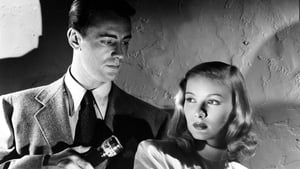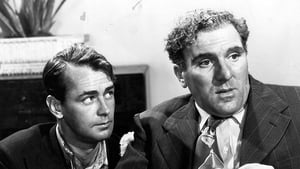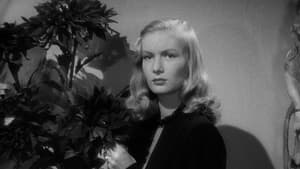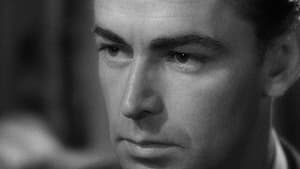Contact: [email protected]
Video Sources 0 Views
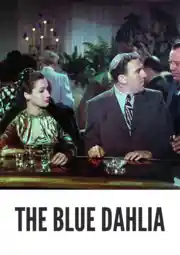
Synopsis
[ez-toc]




Introduction
In the enchanting realm of old movies, where shadows dance and mysteries linger, stands “The Blue Dahlia Colorized,” a 1946 American crime film that has etched its name in the annals of film history. The cinematic gem, directed by George Marshall, unfolds against the backdrop of the film noir genre, immersing audiences in a world of suspense, crime, and seduction. Now, in a bold move to breathe new life into this classic, “The Blue Dahlia Colorized” has been colorized, sparking a debate about the artistic integrity of old films.
Read Media File Transfer Agreement: Terms and Conditions
Read FAQ
Understanding The Blue Dahlia Colorized and Its Place in Film Noir History
Directed by George Marshall, a maestro in his own right, “The Blue Dahlia Colorized” stars the iconic duo of Alan Ladd and Veronica Lake, catapulting the film into the echelons of film noir greatness. Marshall’s vision for the movie perfectly encapsulates the moody and atmospheric essence of film noir, where shadows play as important a role as the characters themselves.
The chemistry between Alan Ladd and Veronica Lake is undeniable, adding a layer of intrigue and magnetism to the narrative. Ladd’s portrayal of a war veteran tangled in a web of deception and Lake’s enigmatic allure create a perfect storm of suspense. As we delve into the heart of film noir, we recognize the distinct visual style and narrative tropes that define the genre, with “The Blue Dahlia Colorized” standing as a testament to Marshall’s directorial prowess.
The Colorization Controversy: Debating the Artistic Integrity of Old Movies
The decision to colorize classic films has been a contentious one, with purists arguing against tampering with the black-and-white aesthetics that define the golden age of cinema. However, proponents of colorization argue that adding hues to these classics can make them more accessible to contemporary audiences and breathe new life into timeless tales.
Colorization involves applying color to monochromatic images, a process that has evolved with technological advancements. This controversial practice sparks debates about the preservation of the original artistic intent versus the desire to modernize and appeal to current sensibilities. As “The Blue Dahlia Colorized” undergoes this transformation, it opens the floor to a discussion about the delicate balance between restoration and innovation.
Experiencing The Blue Dahlia Colorized: A Plot Summary
For those unacquainted with the twisted narrative of “The Blue Dahlia Colorized,” the film is a murder mystery draped in noir aesthetics. Raymond Chandler, a luminary in the world of crime fiction, contributes to the screenplay, infusing it with sharp dialogue and a labyrinthine plot. As war veteran Johnny Morrison (Alan Ladd) finds himself entangled in a murder investigation, secrets unravel, leading to a climax shrouded in shadows and deceit.
The plot’s complexity, a hallmark of Chandler’s storytelling, weaves a captivating tapestry that keeps audiences on the edge of their seats. With each twist and turn, “The Blue Dahlia Colorized” unfolds as a quintessential example of the film noir genre, showcasing the bleak realities and moral ambiguity that characterize this cinematic style.
The Key Players: Characters and Cast of The Blue Dahlia Colorized
The success of “The Blue Dahlia Colorized” hinges not only on its directorial vision but also on the stellar performances of its cast. William Bendix and Howard Da Silva stand out among the ensemble, bringing depth and nuance to their respective characters.
Bendix’s portrayal of Buzz Wanchek, a friend of Morrison and a war veteran, adds a layer of camaraderie and tragedy to the narrative. Da Silva, on the other hand, embodies the menacing antagonist role, contributing to the noir atmosphere that permeates every frame. The synergy between the cast members elevates the film, making each character a crucial piece in the intricate puzzle of “The Blue Dahlia.”
Bringing The Blue Dahlia to Life in Color
As “The Blue Dahlia” undergoes the colorization process, the question arises: can this classic maintain its noir charm in a world of vibrant hues? Paramount Pictures, the studio behind the production, has undertaken the meticulous task of preserving the film’s visual authenticity while adding a new layer of visual richness.
Advancements in restoration techniques have allowed for high-quality colorization, ensuring that the original intent of each frame remains intact. The careful balance struck between preserving the essence of the black-and-white original and infusing it with color opens a gateway for both purists and modern audiences to appreciate the film’s aesthetic in different ways.
Reception, Awards, and Legacy of The Blue Dahlia
Upon its initial release, “The Blue Dahlia” garnered attention and acclaim, placing it in the esteemed company of other celebrated noirs like “Double Indemnity.” While it may not have clinched an Academy Award, its contribution to the noir genre and its reception among audiences solidify its place in cinematic history.
As the colorized version enters the fray, it raises questions about how modern audiences perceive and appreciate classic films. Does the infusion of color enhance the viewing experience, or does it risk diluting the authentic charm that black-and-white classics exude? These are queries that cinephiles and critics grapple with as “The Blue Dahlia” takes on a new visual identity.
Where to Watch The Blue Dahlia Online
For those eager to embark on the journey of “The Blue Dahlia” in its colorized splendor, various online platforms offer the film for streaming or digital purchase. Dive into the world of noir elegance from the comfort of your own screen, where the allure of mystery and suspense awaits.
Preserving the Past: The Importance of Both Original and Colorized Classics
“The Blue Dahlia” serves as a time capsule, transporting audiences to 1940s L.A. with its portrayal of navy officers and war veterans navigating a post-war landscape. The film’s dual legacy, as both a black-and-white original and a colorized adaptation, captures the essence of an era while allowing modern audiences to connect with its themes.
As we appreciate the visual allure of the colorized version, it’s crucial to recognize the importance of preserving the original aesthetic integrity of classic films. The debate between black-and-white and colorization underscores the delicate balance between honoring the past and embracing the present, ensuring that these cinematic treasures endure for future generations.
Conclusion
In the enigmatic world of “The Blue Dahlia Colorized 1946,” where shadows whisper tales of crime and passion, the debate on colorization unfolds. Encouraging viewers to explore both the original black-and-white and the colorized versions, this cinematic masterpiece invites us to appreciate the evolution of classic films.
“The Blue Dahlia” stands as a testament to the enduring qualities of film noir, regardless of its visual presentation. As we navigate the delicate dance between preservation and innovation, may this classic continue to captivate audiences, its allure undiminished by the passage of time. So, dive into the world of noir elegance, where shadows and hues intertwine, and let “The Blue Dahlia” cast its spell over discerning cinephiles, old and new alike.

